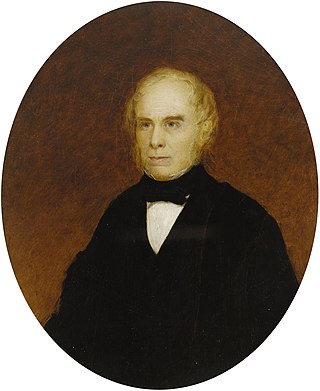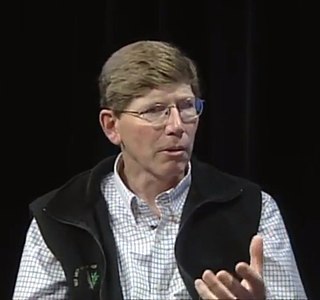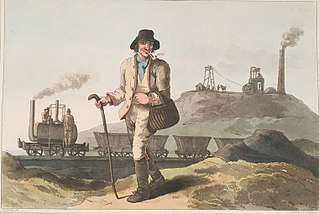
John James Audubon was a French-American self-trained artist, naturalist, and ornithologist. His combined interests in art and ornithology turned into a plan to make a complete pictorial record of all the bird species of North America. He was notable for his extensive studies documenting all types of American birds and for his detailed illustrations, which depicted the birds in their natural habitats. His major work, a color-plate book titled The Birds of America (1827–1839), is considered one of the finest ornithological works ever completed. Audubon is also known for identifying 25 new species. He is the eponym of the National Audubon Society, and his name adorns a large number of towns, neighborhoods, and streets across the United States. Dozens of scientific names first published by Audubon are still in use by the scientific community. In recent years his legacy has become controversial for his involvement in slavery and his racist writings as well as allegations of dishonesty.

Aquatint is an intaglio printmaking technique, a variant of etching that produces areas of tone rather than lines. For this reason it has mostly been used in conjunction with etching, to give both lines and shaded tone. It has also been used historically to print in colour, both by printing with multiple plates in different colours, and by making monochrome prints that were then hand-coloured with watercolour.

The northern harrier, also known as the marsh hawk or ring-tailed hawk, is a bird of prey. It breeds throughout the northern parts of the northern hemisphere in Canada and the northernmost USA.

Alexander Wilson was a Scottish-American poet, ornithologist, naturalist, and illustrator. Identified by George Ord as the "Father of American Ornithology", Wilson is regarded as the greatest American ornithologist before Audubon.

William MacGillivray FRSE was a Scottish naturalist and ornithologist.

John Gould was an English ornithologist who published monographs on birds, illustrated by plates produced by his wife, Elizabeth Gould, and several other artists, including Edward Lear, Henry Constantine Richter, Joseph Wolf and William Matthew Hart. He has been considered the father of bird study in Australia and the Gould League in Australia is named after him. His identification of the birds now nicknamed "Darwin's finches" played a role in the inception of Darwin's theory of evolution by natural selection. Gould's work is referenced in Charles Darwin's book, On the Origin of Species.

The prothonotary warbler is a small songbird of the New World warbler family. It is named for its plumage which resembles the yellow robes once worn by papal clerks in the Roman Catholic Church.
The Havell family of Reading, Berkshire, England, included a number of notable engravers, etchers and painters, as well as writers, publishers, educators, and musicians. In particular, members of this family were among the foremost practitioners of aquatint; and had a long association with Indian art and culture. The family first came to notice through the brothers Luke Havell and Robert Havell the Elder ; along with their nephew Daniel Havell.

The Birds of America is a book by naturalist and painter John James Audubon, containing illustrations of a wide variety of birds of the United States. It was first published as a series in sections between 1827 and 1838, in Edinburgh and London. Not all of the specimens illustrated in the work were collected by Audubon himself; some were sent to him by John Kirk Townsend, who had collected them on Nathaniel Jarvis Wyeth's 1834 expedition with Thomas Nuttall.

Maria Martin Bachman of Charleston, South Carolina, was an American watercolor painter and scientific illustrator. She contributed many of the background paintings for John James Audubon's The Birds of America (1831–39) and Viviparous Quadrupeds of North America (1845–48). Bachman was the only woman of the three principal assistants that Audubon employed at the time.

The snowy sheathbill, also known as the greater sheathbill, pale-faced sheathbill, and paddy, is one of two species of sheathbill. It is usually found on the ground. It is the only land bird native to the Antarctic continent.
Priscilla Susan Bury, born Falkner, was an English botanist and illustrator.

Scott Weidensaul is a Pennsylvania-based naturalist and author. He was a finalist for the 2000 Pulitzer Prize in general nonfiction for his book Living on the Wind: Across the Hemisphere With Migratory Birds.

Illustrations of the Family of Psittacidae, or Parrots is an 1832 book containing 42 hand-coloured lithographs by Edward Lear. He produced 175 copies for sale to subscribers as a part-publication, which were later bound as a book. Lear started painting parrots in 1830 when he was 18 years old, and to get material for his book he studied live birds at the London Zoo and in private collections. The latter included those of Edward Smith Stanley, later 13th Earl of Derby, who had a large menagerie at Knowsley Hall, and Benjamin Leadbeater, a taxidermist and trader in specimens. Lear drew onto lithographic plates for printing by Charles Joseph Hullmandel, who was known for the quality of his reproductions of fine art.

D-Scribe Digital Publishing is an open access electronic publishing program of the University Library System (ULS) of the University of Pittsburgh. It comprises over 100 thematic collections that together contain over 100,000 digital objects. This content, most of which is available through open access, includes both digitized versions of materials from the collections of the University of Pittsburgh and other local institutions as well as original 'born-electronic' content actively contributed by scholars worldwide. D-Scribe includes such items as photographs, maps, books, journal articles, dissertations, government documents, and technical reports, along with over 745 previously out-of-print titles published by the University of Pittsburgh Press. The digital publishing efforts of the University Library System began in 1998 and have won praise for their innovation from the leadership at the Association of Research Libraries and peer institutions.
William Home Lizars was a Scottish painter, engraver and publisher.

Gods' Man is a wordless novel by American artist Lynd Ward (1905–1985) published in 1929. In 139 captionless woodblock prints, it tells the Faustian story of an artist who signs away his soul for a magic paintbrush. Gods' Man was the first American wordless novel, and is considered a precursor of the graphic novel, whose development it influenced.

The Darlington Collection is extensive collection of rare documents, maps, and other historical material focusing on early American history, particularly that of Western Pennsylvania. The original material is housed by the Archives Services Center (ASC) of the library of the University of Pittsburgh with digitized material available at the Darlington Digital Library. The collection was inherited by Darlington's daughters Mary O'Hara Darlington and Edith Darlington. The donation of the collection was first given to the University of Pittsburgh in 1918. The rest of the collection was donated in 1925.

The Audubon Mural Project is a public art project with the goal of painting the birds depicted by John James Audubon in his early 19th century folio The Birds of America on blank walls and roll-down corrugated metal shop shutters of the Hamilton Heights and Washington Heights neighborhoods of upper Manhattan where Audubon once lived.

The Costume of Yorkshire is an 1814 book by George Walker illustrating the various styles of dress worn by people of differing traditional professions in the county of Yorkshire in the 19th century.



















